The politics of Finland take place within the framework of a parliamentary representative democracy. Finland is a republic whose head of state is President Sauli Niinistö, who leads the nation's foreign policy and is the supreme commander of the Finnish Defence Forces. Finland's head of government is the Prime Minister, who leads the nation's executive branch, called the Finnish Government. Legislative power is vested in the Parliament of Finland, and the Government has limited rights to amend or extend legislation. Because the Constitution of Finland vests power to both the President and Government, the President has veto power over parliamentary decisions, although this power can be overruled by a majority vote in the Parliament.
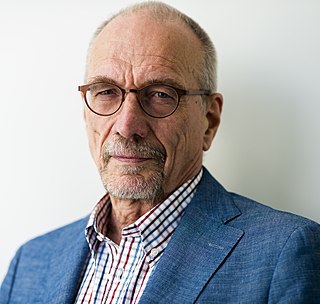
Nils Ole Hilmer Torvalds is a Finnish politician and Member of the European Parliament (MEP). He is a member of the Swedish People's Party of Finland, part of the Alliance of Liberals and Democrats for Europe.

The Finns Party, formerly known in English as the True Finns, is a Finnish conservative political party, founded in 1995 following the dissolution of the Finnish Rural Party.
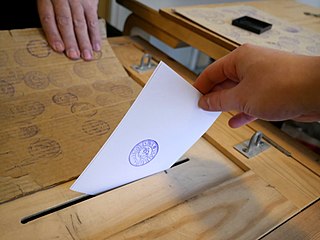
There are four types of elections in Finland. Each Finnish citizen at least 18 years of age has the right to vote in each of the elections, which decide the following: the president, the parliament, the MEPs, and the municipal and city councils.

Northern Savonia or, officially, Pohjois-Savo is a region in eastern Finland. It borders the regions of Etelä-Savo, Central Finland, North Ostrobothnia, Kainuu, and North Karelia. Kuopio is the largest city in the region.
The Communist League of New Zealand is a New Zealand communist party.
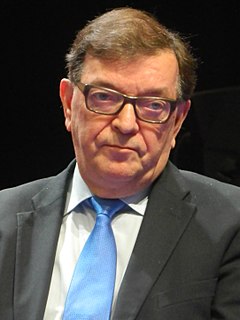
Paavo Matti Väyrynen is a Finnish veteran politician and a member of the Finnish Parliament, representing the Seven Star Movement and formerly the Citizen's Party and Centre Party. Väyrynen has been a member of the Finnish Parliament previously from 1970 to 1995 and again from 2007 to 2011 and has held many ministerial portfolios. He has also been a Member of the European Parliament from 1995 to 2007, and again from 2014 to 2018.

Communist Party of Finland is a political party in Finland. It was founded in the mid-1980s as Communist Party of Finland (Unity) by the former opposition of the old Communist Party of Finland (1918–1992). SKP is not represented in the Finnish parliament, but the party has local councillors in some municipalities, including the city councils of Helsinki and Tampere. SKP claims 2,500 members.
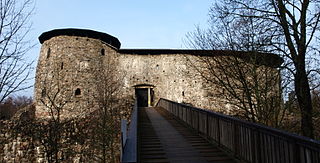
Raseborg is a town and municipality of Finland. It was created on January 1, 2009, when the municipalities of Ekenäs, Karis and Pohja were consolidated into a single town.

The Pirate Party is a registered political party in Finland. The group currently has around 4,065 members. The chairman of the party is Petrus Pennanen. The party is a member of Pirate Parties International.
For the Poor is a Finnish political party, not situated anywhere on the traditional political map. It was founded in November 2002. The party is one of the smallest in Finland, as it has no seats in either the Parliament of Finland or the European Parliament, and has only ever held one municipal council seat in the city council of Espoo (2008–2012).

Presidential elections were held in Finland in January and February 2012. The first round took place on 22 January 2012 with advance voting between 11 and 17 January. Since no candidate received a majority of the vote, a second round was held on 5 February, with advance voting between 25 and 31 January. Sauli Niinistö was elected the President of Finland for a term from 1 March 2012 until 2018.
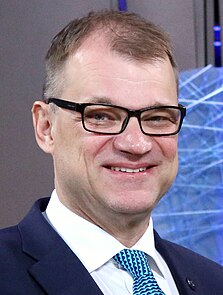
Juha Petri Sipilä is a Finnish politician who has served as Prime Minister of Finland since 2015. A relative newcomer to politics, he has a successful background in business. He has been the leader of the Centre Party since 9 June 2012. After leading the Centre party to victory in the 2015 general election, Sipilä formed a centre-right coalition and was appointed Prime Minister by the Finnish Parliament on 29 May 2015. On 8 March 2019, Sipilä stated his intention to resign as Prime Minister, citing difficulties in reforming Finland's health care system. President Sauli Niinistö has asked him to continue with a caretaker government until a parliamentary election can be held on April 14.
Finnish municipal election, 2008 was held in Finland on 26 October with advance voting between 15 and 21 October 2008. 10,412 municipal council seats were open for election in 332 municipalities. The number of councillors decreased by over 1,554 compared to the previous election due to the merging of several municipalities.

The cabinet of Juha Sipilä was the 74th government of Finland. It was formed following the parliamentary election of 2015 and formally appointed by President Sauli Niinistö on 29 May 2015. Since June 2017, the cabinet has consisted of a coalition formed by the Centre Party, Blue Reform and the National Coalition Party. The cabinet's Prime Minister was Juha Sipilä.

Jari Tapani Lindström is a Finnish politician and current Minister of Labor. He represented the Finns Party till 2017 and was first elected to the Parliament in 2011 in the former constituency of Kymi. In 2014, Lindström was appointed the chairman of the Finns Party parliamentary group. In the 2015 elections he maintained his seat, standing in the newly formed South-Eastern constituency. He was appointed as both Minister of Justice and Minister of Labor in May 2015.

The Feminist Party is a Finnish feminist political party. It was founded on June 2016 and registered as a political party in January 2017. The party has three chairpersons who are Katju Aro, Warda Ahmed and Katriina Rosavaara. It calls gender equality, human rights and human security the primary pillars of its politics.

Laura Huhtasaari is a Finnish politician. A member of the Finns Party, she has represented Satakunta in the Parliament of Finland since April 2015. She was the Finns Party candidate for the 2018 Finnish presidential election.

Independence Party is a minor Eurosceptic political party in Finland. It was founded in 1994 as Alliance for Free Finland. The party opposes Finland's membership in the European Union and the Eurozone. Its current chairman is Henri Aitakari.




















